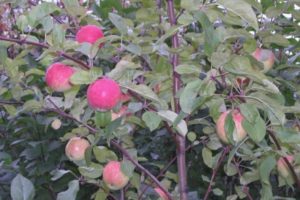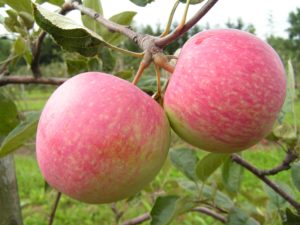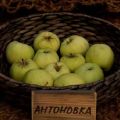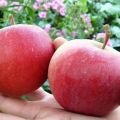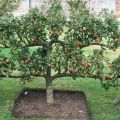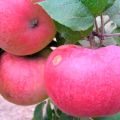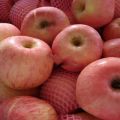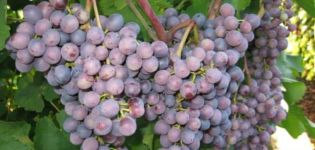Description and characteristics of the apple variety Aport, planting and care features
Aport is an ancient apple variety. The mention dates back to the twelfth century. The variety is famous for its large carmine-colored fruits with an amazing smell and taste. Now all over the world, its varieties are more common, differing in other characteristics. In Soviet times, wonderful fragrant apples were delivered to the Kremlin from Kazakhstan's Alma-Ata.
The history of breeding the variety Aport
The place and time of the appearance of the Aport are not known for certain. The variety came to the central part of Russia in the fifteenth century, receiving the name Aport Alexandra. It grows more often in the southern regions of the Middle Strip. It is believed that today the purity of the variety has been lost. Now it is a cultivar of several apple cultivars.
Characteristic
The aport is known all over the world. About forty varieties were produced from it and clones. It is considered a symbol of the city of Alma-Ata, the former capital of Kazakhstan.
External description of the tree and crown
The tree grows above average growth, with a strong crown, with a large number of branches, the crown reaches ten meters in diameter. Young shoots are as thick as a pencil, with a weak brown color.
In which areas does it grow
One of the leading varieties of Kazakhstan and Kyrgyzstan. It grows in many countries of the world. It was first brought to Poland. Then - to France, Canada, England. After the conquest of Europe, apple trees appeared in the United States.
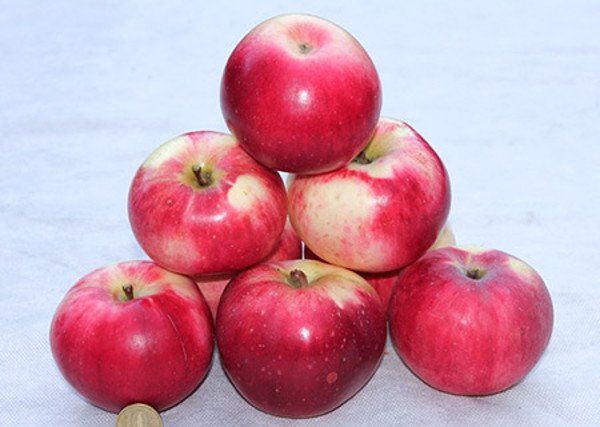
Tree lifespan
With proper care and agricultural technology, the apple tree bears fruit for up to forty years. Fruiting can be prolonged with anti-aging pruning.
Frost resistance
The variety does not tolerate low temperatures. Therefore, it is grown in the southern regions. There winter is not long, with average temperatures, hot, long summers. Cultivation in the northern regions is possible on stocks of winter-hardy varieties.
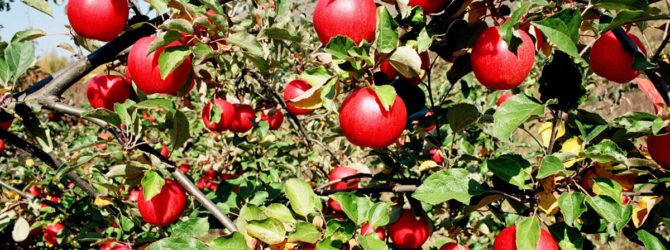
Immunity
The Aport apple tree has a very weak immunity to various types of diseases. The tree must be constantly sprayed for prophylaxis.
Ripening time and yield
Apple tree of late autumn ripening.The crop is harvested in mid-autumn, a year later. One hundred and fifty kilograms of apples are harvested from an adult tree.
Taste and nutritional qualities of the fruit
The apples are quite sweet, with a slight sourness. The pulp is very juicy, with a pleasant smell. The fruit contains many useful components and trace elements.
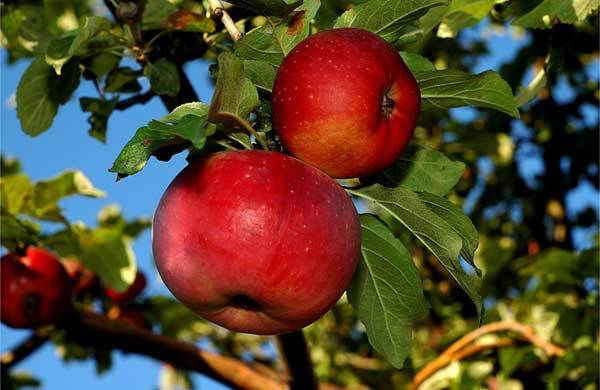
Pollinator varieties
In order for the harvest to be plentiful every year, one of the pollinator varieties must be planted next to the Aport variety:
- Shield;
- Memory;
- Esaul;
- Prikubanskoe.
Pros and cons of the view
The main advantage of this variety is its fruit. Ripe apples are very large, fragrant, with a delicious taste. You can store them for several months. The disadvantage is weak immunity to rot and scab. Also, the average resistance to frost is considered a minus.
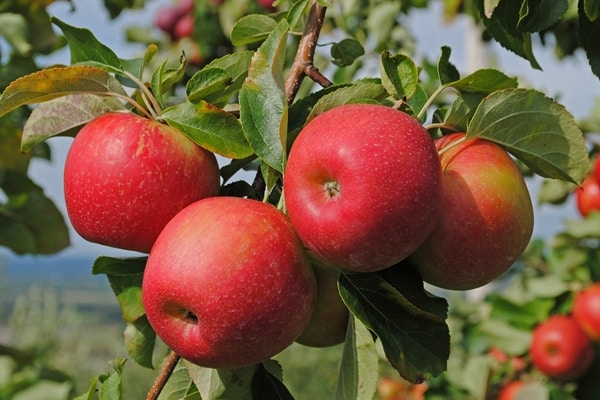
How to plant an apple tree
First of all, choose a suitable place for the seedling. The apple tree needs a lot of light and protection from drafts.
Landing dates
The apple tree is planted in mid-spring. Before the onset of cold weather, it will take root and gain strength.
We prepare young seedlings
If the seedling has dried out a little, its roots must be immersed in water for a day. Before planting, you need to carefully review the root system. Damaged, frozen, rotten roots must be cut off, and the cut site must be treated with clay gruel.
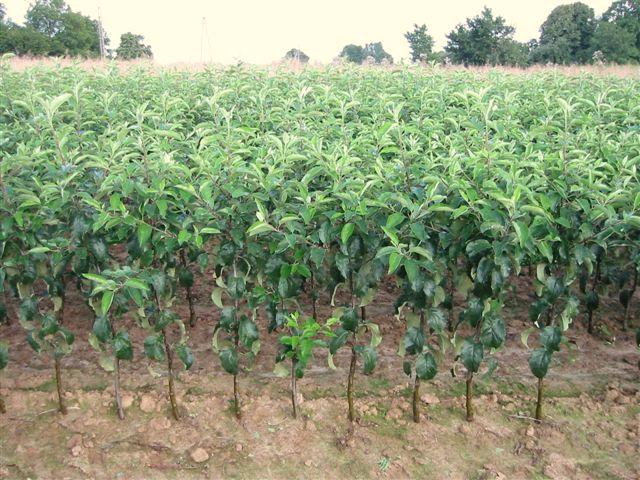
Soil composition and planting scheme
You need to dig a hole 70 centimeters deep. Mix the resulting soil with organic fertilizer. At the bottom of the hole, place a medium stone, drainage in a small layer. Place a seedling in the middle of the hole, cover it with prepared soil. The root collar should remain three centimeters on the surface.
Young tree care
The main condition for caring for a young tree is timely watering. The soil around the trunk should be moist. The first watering is done with water at room temperature. Fertilizers should be applied two years after planting the seedling. In autumn, it is better to add organic fertilizer to the apple tree, in spring to give preference to mineral fertilizer.
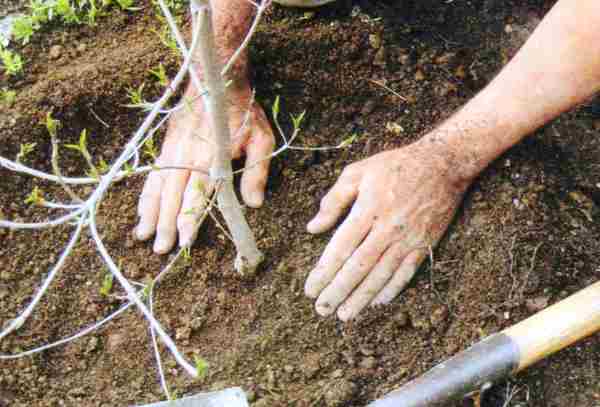
Agricultural rules for an adult apple tree
Following simple rules, you can achieve high yields of quality fruits.
Irrigation regularity
In dry summers, the apple tree is watered abundantly twice a week.
Fertilizer
Fertilization is necessary twice a year - in spring and autumn. In the spring, during the rainy season, when the air humidity rises, 600 grams of urea is distributed under the tree. Ammonium nitrate will also be a useful fertilizer. Dissolve forty grams of nitrate in ten liters of water.

In autumn, dissolve 30 grams of potassium, 60 grams of double superphosphate, 30 grams of calcium in a bucket of water. The solution is used to feed one tree.
Preventive spraying
To protect the fruits from infection with rot, prophylactic spraying with colloidal sulfur is carried out. Another remedy that will help prevent the appearance of rot fungus is a suspension of malofos. It is enough to dilute one hundred grams of any preparation in a bucket of water and spray the tree.
Also, green aphids may appear on the apple tree. In the fight against this pest, a 0.3% solution of Entobacterin will help - dilute thirty grams in ten liters of water.
Molding
A mature tree needs annual pruning. Forming should be done in early spring or late autumn, after harvesting. The tree is freed from dry, damaged, non-fruiting branches.

Preparing for winter
In order for the tree to be prepared for winter, it is necessary:
- Water well throughout the growing season.
- After harvesting, feed with mineral fertilizers.
- Dig up the soil around the apple tree, after removing the grass.
- Treat the trunk with a solution based on copper sulfate.
- Cover the trunk circle with a ten centimeter layer of gravel or spruce branches.
- Insulate the trunk with burlap.
Subspecies and characteristics of apple trees
Subspecies of the variety Aport were bred using a stock. The new varieties are created for better growth in other regions.

Dubrovsky
An apple tree with a height of 2.5 meters tolerates low temperatures perfectly. It adapts well to difficult climates. Begins to bear fruit quickly after planting. Due to large fruits and abundant fruiting, the branches of the tree break. To avoid this, supports are installed in advance.
Alexandrovsky
Aleksandrovsky aport is famous for its harvest. The apples are very large, one fruit reaches three hundred grams. This variety is difficult to find because it is almost lost, but great efforts are being made to revive it.
Almaatinsky
This subspecies of Aporta grows in Kazakhstan. This variety of apple trees is grown in the mountains. The fruits retain their unique taste until almost May.

Pushkin
The variety was bred for growing fruits in the Moscow region, normally tolerates low temperatures. After planting in the ground, the tree brings its first harvest in the sixth year. The apples are very fragrant, large and tasty.
White
The apple tree is distinguished by the light color of apples with a reddish tint. In the context, the fruit is pinkish. Stores well.
Kuban
Apples ripen in September and are stored for two months. The variety is resistant to diseases, tolerates frost well.
Blood red
The tree reaches six meters in height, has an average frost resistance. Harvested in the middle of autumn. The apples are very fragrant, juicy and sweet.
